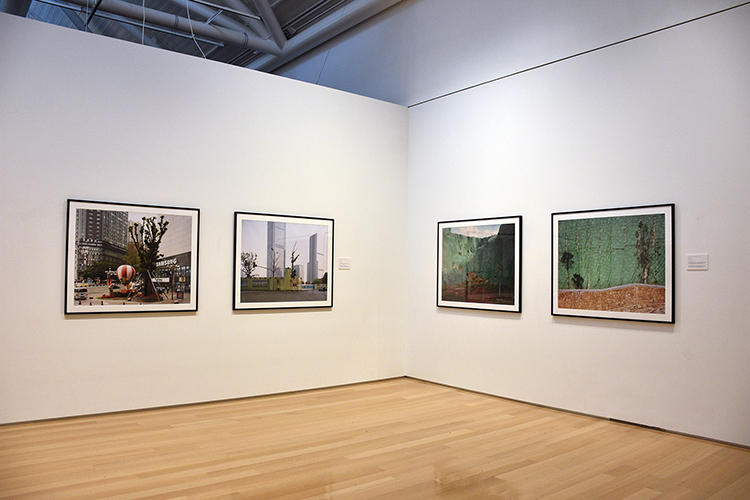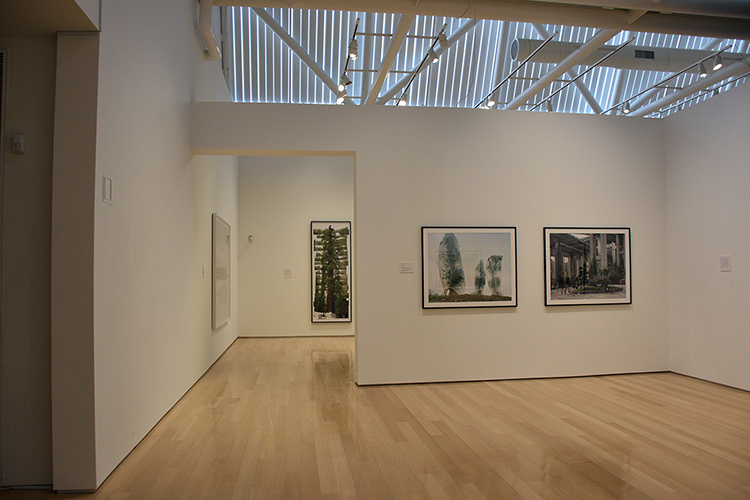Group show with Yan Wang Preston
Trees, many standing thousands of years tall, are some of the oldest beings on earth. Although they are vital to our survival, humans have often fostered a contentious relationship with them. Featuring 14 artists from around the world, The Art of Trees explores themes of restoration and destruction, community and isolation, location and identity, and fragile temporalities in a variety of innovative mediums – from sculpture, to video, to photography. Each piece of work enables us to consider our relationship with the environment and the ways in which we could reinvent this for improved social and ecological welfare.
Transplant
Several of Heroine Yan Wang Preston’s photographs from her Forest series 2010-2017 feature. The series centres around ‘the grandiose ambitions and absurd failures of environmental restoration projects, serving as the perfect foil to the lofty idealism underpinning urban reforestation and ecological recovery’, according to curator Dr. Jodi Kovach. In recent years, there has been a drive towards rapid tree planting as the solution to previous decades of tree felling. Although frequently presented as an immediate remedy to the problem, Yan critiques this idea. Nature is not immediate; trees take time to grow and nature requires patience. While there is a desire to merge urban environments with nature, there lacks the endurance to naturally see it happen. In Forest, Yan reveals how, in China, old trees are bought from elsewhere and transplanted into cities. Like new limbs they are attached into red semi-artificial soil, but failing to merge successfully, many of them die.
Although motivation to integrate green spaces into a developing world is admirable, Yan explains how ‘green plastic netting is used to cover anything unappealing to the eye’. Rather than lush green foliage, the tree – now wrapped in green plastic – looks suffocated. It becomes less a question of environmental conservation and more of aesthetics. One tree in particular which features in Yan’s Forest series is ‘Frank’. Shown in a set of three photographs is his life in the village, his transition to the city and his ultimate demise. Naming the trees not only anthropomorphises them, but consequently gives them a voice, enabling a shift in narrative; we are able to see nature from the perspective of nature itself.
Future Connection
The exhibition’s strong focus on community is highlighted through the inclusion of a section called Nearby Voices. Aiming to bridge the gap between global and local environmental concerns by engaging with the art and voices of community members. Trees foster a sense of community, not simply because of their relation to one another in woods, forests, and jungles; a village tree becomes a local gathering spot spanning the lives of many generations. As notable markers on the landscape, they act as vital characters in stories of place. In the city the tree continues to be surrounded by people, but in a fast-paced digital environment do we take the time to forge the connections with nature and each other as our ancestors once did? As Yan explains ‘maybe it’s the price we pay in order to develop’.














